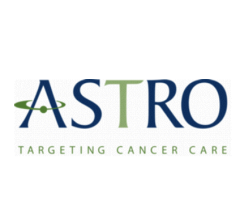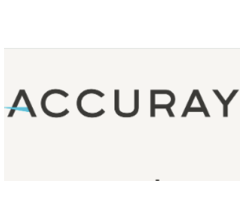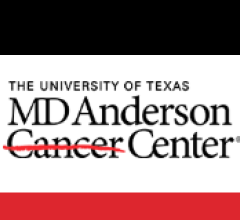
September 27, 2017 – For certain patients with oropharyngeal cancer caused by the human papilloma virus (HPV), an aggressive reduction of radiation therapy after surgery may provide excellent cancer control while simultaneously reducing post-treatment side effects, according to research presented at the 59th Annual Meeting of the American Society of Radiation Oncology (ASTRO). Reducing radiation therapy post-surgery may also improve quality of life and lower treatment costs. Patients in the phase II clinical trial received half the standard radiation dose but achieved equally high cure rates at two years following treatment.
Standard treatment for oropharyngeal squamous cell carcinoma (OPSCC) can include surgery to remove the cancer followed by radiation therapy with or without chemotherapy. While cure rates are excellent following therapy, treating the sensitive throat and neck regions often causes serious and potentially life-altering side effects.
Quality of life considerations have become even more salient in the past several decades, as today’s average OPSCC patient is younger and will live a longer time with any side effects of treatment. Between 1988 and 2004, the rates of HPV‐associated OPSCC more than doubled, while the rates of HPV‐negative disease — which is typically caused by smoking and alcohol consumption — dropped by half. HPV-related disease also is biologically more responsive to radiation and chemotherapy, leading to high cure rates for these patients.
“The profile of the typical oropharynx cancer patient has changed, which means that our approach to treating this disease needs to change, as well,” said Daniel Ma, M.D., lead author of the study and an assistant professor of radiation oncology at the Mayo Clinic in Rochester, Minn. “Several research groups are pursuing an incremental approach to de-escalating treatment, such as using 15 percent less radiation dose. Our trial took a different approach — testing whether we could cut the dose by half. Our findings indicate that this more aggressive approach toward treatment reduction can be viable for appropriately selected patients.”
MC1273 was a single-arm phase II trial for HPV-related OPSCC testing clinical outcomes and quality of life with a de-escalated course of radiation therapy following surgery to remove the disease. Patients received two weeks of twice-daily radiation therapy to the oropharynx for a total dose of 30-36 Gray (Gy), a 50 percent reduction of the standard radiation dose of 60-66 Gy. Patients also received two courses of chemotherapy (docetaxel 15 mg/m2), delivered on days one and eight. The 43 patients with extracapsular extension (ECE), a marker of particularly aggressive disease, received an additional, simultaneous radiation boost to the areas with ECE, for a total dose (including primary treatment) of 36 Gy.
Eighty patients were accrued between September 2013 and June 2016, with all patients completing treatment. Eligible patients included those with HPV-related OPSCC who had no evidence of residual disease following surgery and a minimal smoking history (e.g., less than one pack per day for 10 years or less). The median patient age was 60.5 years (range 25-77 years). All patients had stage III or IV disease. The median follow-up for this report was 24 months (range 12-46 months).
At a median follow-up of two years after de-escalated treatment, the rate of tumor control in the oropharynx and surrounding region was 95 percent. Of the 80 patients in the trial, three experienced a local recurrence and one patient experienced a regional recurrence. Disease-free survival (DFS) following the dose- reduced treatment was 89 percent. By comparison, the RTOG 0234 clinical trial reported a two-year DFS rate of 86.4 percent for patients with HPV-related cancers.
Grade 2 or higher side effects were reported in one percent of patients at one year following treatment and ten percent at two years following treatment. By comparison, studies of adjuvant radiation for OPSCC generally report rates of late grade 2 or higher side effects at more than 50 percent (e.g., 55% on RTOG 0234). No patients had grade 3+ toxicity at one year or two years following treatment. Fourteen patients (18 percent) experienced cumulative grade 3+ toxicity within three months of treatment; all instances resolved by six months post-treatment. One additional patient experienced a temporary grade 4 event related to a chemotherapy reaction.
Patients’ ability to swallow improved slightly at one year following radiation therapy compared to pre-treatment (p = 0.03). Swallowing function was measured using the Modified Barium Swallow Impairment Profile (MBSImP). Importantly, no patients needed to have a feeding tube placed during treatment.
Patient’s quality of life largely improved or did not change following treatment, except for dry mouth. Patients reported somewhat worse salivary flow following treatment (p < 0.0001), as measured by the University of Michigan’s Xerostomia QOL scale (XeQOLS). However, none of the other quality of life scales declined significantly — including the Functional Assessment of Cancer Therapy – Head and Neck Version 4 (FACT H&N), the EuroQol EQ-5D and the European Organisation for Research and Treatment of Cancer instrument for head and neck cancer (EORTC-HN). Each measure was assessed prior to radiation therapy and again at one, three, 12 and 24 months following treatment.
“Side effects with dose-reduced treatment were dramatically less than what we usually see in treatment of adjuvant radiation therapy for oropharynx cancer. For example, no patients in this trial needed a feeding tube placed, whereas close to a third of patients had feeding tubes placed with traditional doses on other recent clinical trials,” explained Ma.
“The shorter course of treatment also has practical value for patients. If a patient has 20 twice-daily sessions instead of 30 daily treatment sessions, their financial cost is reduced by a third, and time away from work or family is reduced by a third — but the likelihood of cure remains the same.”
While the results are promising, Ma emphasized that findings from a randomized study directly comparing the dose-reduced treatment with traditional treatment are needed before the new approach can be adopted widely.
“These results will require confirmation in a randomized trial, and this treatment approach should be considered investigational until confirmed in a phase III study, such as the ongoing multi-institutional DART- HPV trial that is currently open for patient accrual,” he said.
Related Content
Clinical Trials and Cutting-Edge Radiation Oncology Research to Be Featured at ASTRO 2017
For more information: www.astro.org


 December 11, 2025
December 11, 2025 









